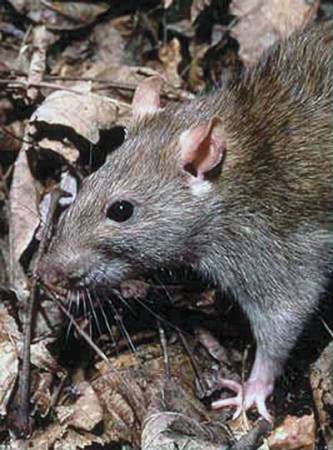
They’re creepy, crawly, dirty, and very resilient. So far, Alberta remains relatively free of the pests.
Worries about rats in the province became known in the media following the discovery of two of the spiky-furred rodents in Calgary, and the reports of an infestation in Swift Current, Saskatchewan. This week rats were sighted in Maple Creek, Saskatchewan, about 80 kilometres from Medicine Hat.
While common ways for the animal to be transplanted is often through cargo, or in personal trailers such as RVs or boats, director of Community Services Paul Salvatore, head of the town department that oversees bylaw enforcement, says Drumheller is in no greater risk of seeing the spread of these rodents in the valley.
Alberta has taken vigilant efforts to control rats in the province since the 1950’s, and it has remained a successful program. Before this latest flurry of reports over the last two weeks, Phil Merrill, an inspector for Alberta Agriculture, says there is usually only a handful of reports.
He says the recent reports are not necessarily a sign there are more rats, but a heightened awareness of the threat on the part of Alberta residents who are reporting what appears to be either rats, or their nesting areas.
“Since the media attention to it, we have found 10 other individual animals that have proven to be rats, which is a high number. We usually get about two reports a month,” said Merrill. “I don’t think it is any more than usual, it is just that people are really watching. Many times a rat will come in and jump off a truck and a dog will eat it, no one will see it, and that’s the end of it. There are a lot that no one sees.”
“There might be a little bit to do with the influx of rats to Swift Current.”
He says for residents who think they have spotted a rat, their first action should be to call the local bylaw enforcement office.
“You go directly to bylaw if you see something suspicious, or if you see something you are worried about,” said Merrill. “He, (Salvatore), will do an investigation to see if it is a rat or if there is rodent activity. If he has a carcass, he can identify it. If he only has tracks, diggings and dropping it is harder. If we identify it as a rat, I quickly call him back and tell him to check for signs of another rat.”
Often, Merrill says, a report of a single rat or rat carcass is not reason to be concerned. If more than one rat or a family is discovered, the inspection service will typically be called in because of the animals ability to reproduce. According to the Alberta Agriculture website, a pair of breeding rats can lead to upwards of 15,000 rats in a single year, if left unchecked.
Merrill said he was in Drumheller about three years ago for a report of rat that was deemed not a threat. Most calls they receive prove to not be a concern.
“Usually we get two calls a week, and usually by talking to the person, we can tell if it is a rat or not,” said Merrill. “We get lots of reported sightings, and 95 per cent turn out not to be rats.”
Part of the responsibility of the Alberta Agriculture rat program is education for frontline workers on how to detect and deal with rats. He said the department is implementing a new program.
“We are starting a program where all towns and cities will be invited to a training session. We are starting with larger towns first, and we’ll do another round of training for pest control officers and animal damage control officers,” Merrill said.
















